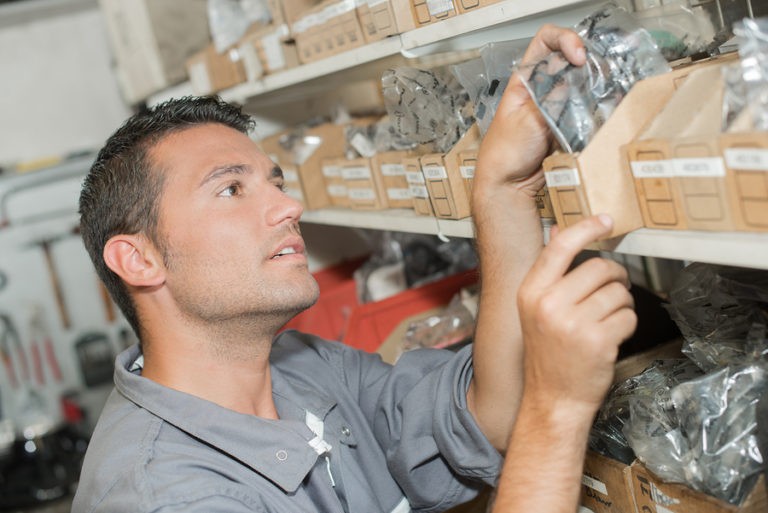Is Your Maintenance Stockroom Set Up for Success?

Your factory’s maintenance stockroom is much more than a storage space or a staging area. It’s where the foundation of good work begins. A sloppy, messy, unorganized storeroom breeds the same quality work. Likewise for one that’s organized, coordinated, labeled, and properly stocked.
If you’re looking for a higher caliber of maintenance and efficiency, consider making improvements at the source. When’s the last time you paid attention to the state of your maintenance stockroom?
The role of a stockroom
Stockroom is a misnomer. A maintenance stockroom is a place where maintenance is planned, executed, and supported — not just a place for housing parts supply. Think of the stockroom as its own ecosystem. It has serial responsibilities for facilitating maintenance and repair operations:
- Stocking parts and components
- Inventorying and reordering parts
- Staging parts for planned operations
- Assessment and reporting of part usage
- Planning and evaluation for upcoming tasks
- Serving as a “home base” for maintenance crews
Most stockrooms also work in tandem with other facets of business. For example, the storeroom generates re-order requests, submitted through the purchasing department. Similarly, the storeroom is responsible for staging parts used by maintenance techs. The stockroom is central to anything and everything involving parts, maintenance, and repair.
The elements of a stockroom
The size and scope of every stockroom will vary depending on the company. A huge manufacturing plant with dozens of different machines and a full maintenance crew will dwarf the stockroom of a small operation with only one or two machines. Nevertheless, the same core elements govern every stockroom:
- Infrastructure — It needs to be large enough to serve its purpose, with amenities befitting its use. This includes everything from proper lighting to insulation and security.
- Location — Make sure the stockroom is adjacent to the factory floor. Closer to operations means fewer delays in service.
- Accessibility — It has to be accessible by all necessary personnel, with controls to dictate who has access to what, when.
- Layout — Organize the stockroom for clear inventorying and optimal material flow. Everything needs to have a place.
- Standardization — A system of record is paramount for inventorying, ordering, staging, and inspection. Nothing should deviate from the norm.
- Signage — Signage and proper labeling are essential for part picking, wayfinding, safety, and more.
Pay close attention to each of these core aspects when designing or improving a stockroom’s efficiency and value. The sum of coordinated stockroom components leads to greater efficiency and reliability from a maintenance strategy.

Benefits for the whole factory
Optimizing the stockroom benefits the entire factory far beyond just facilitating better maintenance. For example, quicker part staging and transportation to the floor means quicker changeovers and mitigated downtime. Similarly, accurate inventory counts reduce the cost of maintaining that inventory.
Most importantly, an organized, efficient stockroom minimizes confusion and mistakes that may have untold ramifications. Something as simple as grabbing the wrong part for repair, missing an item during staging, or forgetting to re-order essential components breeds frustration, unnecessary costs, and defects.
Even if your maintenance and repair operations are lean, your stockroom may represent an opportunity for improvement. Pay attention to the elements of a well-functioning stockroom and optimize around the core principles that make it successful.
If your stockroom is small or leaves a lot to be desired, consider outsourcing maintenance while you tidy up. You can always count on the professionals at Global Electronic Services. Contact us for all your industrial electronic, servo motor, AC and DC motor, hydraulic, and pneumatic needs — and don’t forget to like and follow us on Facebook!
